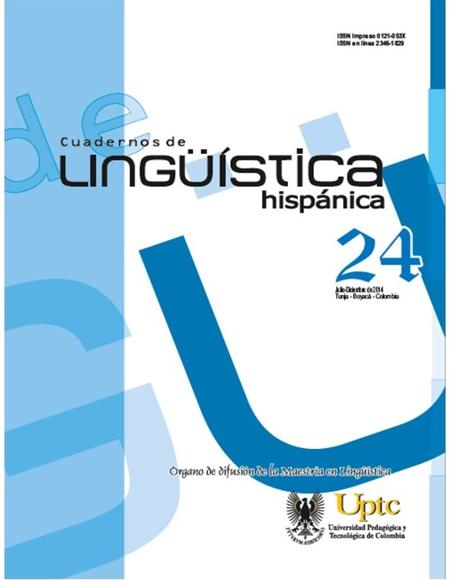Students’ use of power in Foreign Language classroom interaction

Abstract
This paper reports the findings of a study which targeted to explore the way as undergraduate students express and use power in classrooms. It also aimed at finding out the sources of students’ power and their viewpoints about the issue. The population was two groups of prospective English teachers from the Modern Languages Program, at Universidad Pedagógica y Tecnológica de Colombia. Direct classroom observation, a teacher’s journal, and semi-structured interviews were the main sources for gathering information. The findings were grouped into four categories dealing with leadership, sources of students’ power, the ideal type of power in classrooms, and some wrong assumptions about power.
Keywords
classroom-interaction, collaborative learning, power sources, students’ power relations, and types of power.
References
- Blanchard, K. (2005). Advice on leadership by experts. Editorial Portafolio.
- Bogdan, R.C. (2003). Qualitative research for education. Newton, Massachusetts: Pearson.Education Group, Inc. 4th edition.
- Corbin and Strauss (1990). The creation of theory: A recent application of the Grounded Theory Method. The Qualitative Report, Volume 2, Number 4 (http:www.nova.edu/sss/QR/QR2-4/pandit.html). Consulted in February, 2007.
- Cummins, J. (2000). Language, power and pedagogy. Bilingual children in the crossfire. Clevedon: Multilingual matters.
- Dörnyei, Z. & Murphey, T. (2003). Group Dynamics in the Language Classroom. Cambridge: Cambridge University Press.
- Foucault, M. (2003). Introduction to Archaeology of Science. New York: The New Press. Hodgkison and Meeth (1971). In Richmond V. P. and McCroskey J. C. (1982, 1992,1995). Power in the classroom: Communication, control and concern. Lawrence Erlbawn Associates, Inc.
- Freire, P. (1987). Literacy: Reading the word and the world. London: The Continuum Publishing Company.
- Hook, P. and Vass, A. (2000). Confident Classroom leadership. High Wycombe, Bucks. Taylor & Francis Company. Red Lion House.
- Johnson, D. (1970, 1979). Student-student interaction: The neglected variable in Education. University of Minesota: Longman.
- Jurado Valencia in Ortega H. J. O. (2005). Poder y Práctica Pedagógica. Bogotá: Cooperativa Editorial Magisterio. Colección Seminarium.
- Lench, L. (2001). Assessment and empowerment: Some critical questions. USA: Massey university.
- Manke, M. P. (1997). Classroom power relations. Understanding student-teacher interaction. London: Lawrence Erlbaum Associates, Publishers.
- Knutson, E. (2001). The French Review. Special Issue on Pedagogy, Vol. 74, n°. 6, pp. 1138-1151. N. Y.: Language Publishing, Inc.
- Ortega H. J. O. (2005). Poder y Práctica Pedagógica. Bogotá: Cooperativa Editorial Magisterio. Colección Seminarium.
- Palacio, L.F. (2005). Características básicas del líder. Colombia: Portafolio.
- Ramos, H.B. Power relations in the EFL classroom through through oral interaction. Master Thesis. Bogotá, Universidad Distrital.
- Richmond, V. P. and McCroskey J. C. (1992). Power in the classroom: Communication, control and concern. Lawrence Erlbawn Associates, Inc.
- Staton, Q.(1990). Communication and student socialization. Norwood, NJ:Ablex.
- Zambrano (2005). In Ortega H. J. O. (2005). Poder y Práctica Pedagógica. Bogotá. Cooperativa Editorial Magisterio. Colección Seminarium.